What is a Root Zone? The Surprising Impact on Your Plants’ Survival
- June 28, 2024
- 0 comment
What is a Root Zone? Discover its crucial role and surprising impact on plant survival. Learn how mastering this can elevate your gardening. Have you ever wondered why some plants flourish and others don’t? It often comes down to what’s happening below the ground in the root zone.
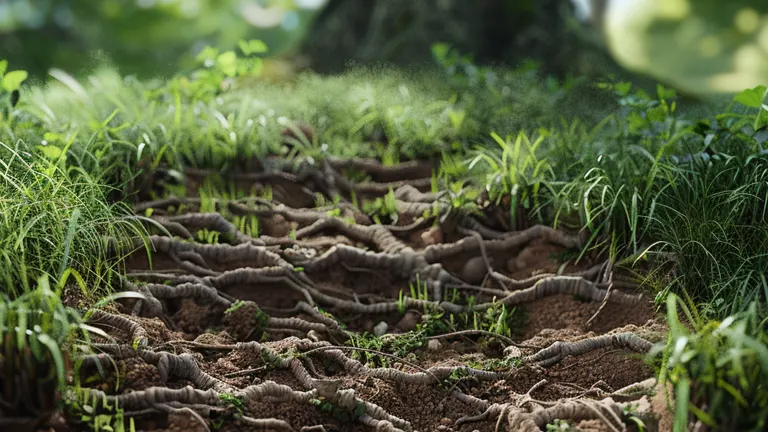
This part of your garden is more than just soil; it’s where your plants’ health is determined. In this article, we’ll explore how the root zone affects your plants and share some tips to help you take better care of it. Ready to give your garden a boost?
Table of Contents
- Understanding the Root Zone
- The Role of the Root Zone in Plant Health
- Factors Affecting the Health of the Root Zone
- Common Problems in the Root Zone
- Improving and Maintaining a Healthy Root Zone
- Advanced Tips for Monitoring and Enhancing the Root Zone
- Conclusion
- FAQs
Understanding the Root Zone
What is a Root Zone?
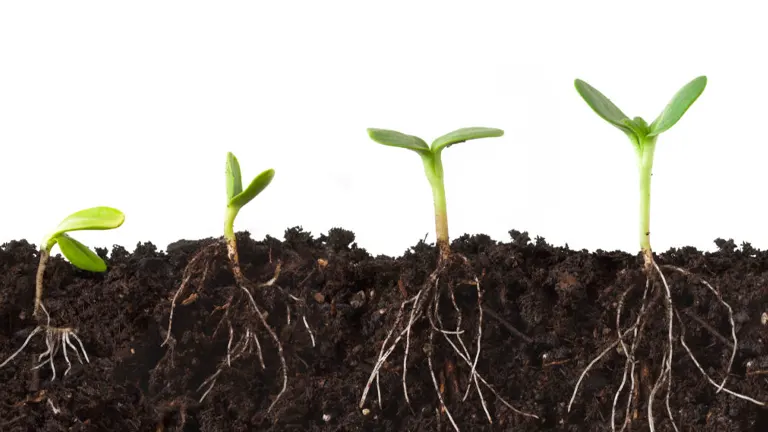
The root zone, commonly known as the rhizosphere, constitutes the soil environment surrounding and supporting a plant’s roots. This zone is pivotal for plant health as it facilitates intricate interactions among roots, soil components, and microbial life. The rhizosphere extends from the fine root hairs, which significantly expand the surface area for nutrient and water absorption, to the bulkier root structures that confer stability to the plant above ground.
Components of the Root Zone
- Soil Types: The root zone’s soil can range from loose and sandy to rich and clay-laden, each type bringing distinct characteristics to water retention and nutrient delivery. Sandy soils tend to drain quickly but hold less water and nutrients, while clay soils retain more water but may inhibit root growth due to their density.
- Organic Matter: This consists of decomposed remnants of plants and animals, enhancing soil fertility and structure. It boosts the capacity of sandy soils to retain water and improves aeration in clay soils by preventing compaction.
- Moisture: Essential for the transport of nutrients into plant roots, moisture levels in the root zone must be carefully managed. Optimal moisture promotes health, while extremes—too dry or too wet—can lead to root suffocation, reduced nutrient uptake, and increased vulnerability to diseases.
- Microorganisms: The rhizosphere is teeming with beneficial microbes, including bacteria and fungi, which play critical roles in nutrient cycling and disease prevention. These organisms help decompose organic matter and convert soil nutrients into forms more accessible to plants.
How Roots Interact with Their Environment
Roots are dynamic, actively seeking necessary nutrients and moisture. They exude enzymes and organic acids to solubilize minerals and enhance nutrient uptake. Furthermore, roots often establish mutualistic relationships with mycorrhizal fungi, which extend their network into the soil, vastly increasing the root surface area for absorption in exchange for carbohydrates produced by the plant.
Scientific Analysis of the Root Zone
To further understand the root zone’s impact on plant health, here’s a table summarizing the key properties of different soil types and their typical impact on root development and plant health:
| Soil Type | Water Retention | Nutrient Availability | Typical Root Health Impact |
|---|---|---|---|
| Sandy | Low | Low | Quick drainage leads to frequent water stress unless irrigated regularly. |
| Clay | High | Variable | High water retention can cause oxygen depletion, impacting root respiration and growth. |
| Loamy | Moderate | High | Ideal for most plants; provides balance between moisture retention and drainage. |
| Peaty | High | Low | High organic content, good for moisture, but may need nutrient amendments. |
The Role of the Root Zone in Plant Health
Nutrient Uptake
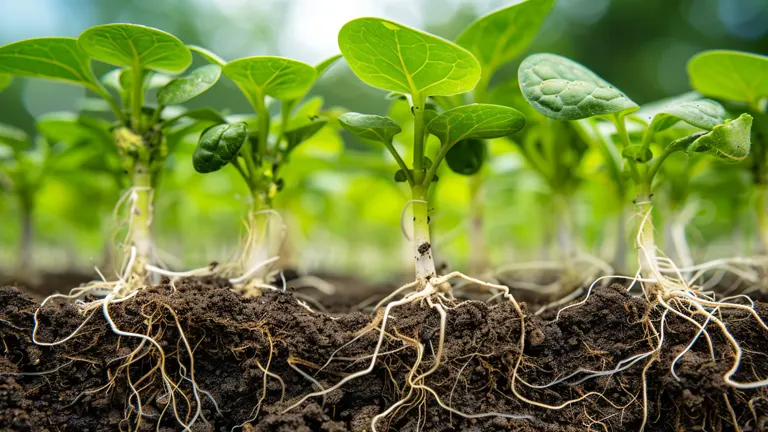
The root zone is the primary gateway for a plant’s nutrient uptake, where essential nutrients dissolved in water are absorbed by the roots. This zone facilitates the intake of macronutrients such as nitrogen (N), phosphorus (P), and potassium (K), as well as crucial micronutrients like iron (Fe) and magnesium (Mg). The availability and absorption of these nutrients depend heavily on the soil’s pH, moisture content, and microbial activity, each playing a pivotal role in converting nutrients into forms accessible to plants. The efficiency of nutrient uptake significantly affects plant vigor, growth, and overall productivity.
Support and Stability
Roots are not only vital for nutrient absorption but also provide crucial physical support. They anchor plants, ensuring stability against external disturbances such as wind or water flow. The architecture of the root system—ranging from deep taproots to widespread fibrous roots—varies by species and is adapted to maximize both stability and resource uptake under different environmental conditions.
Protection Against Diseases
The root zone serves as a critical defense zone against plant diseases. A healthy rhizosphere, rich in beneficial microbes, can effectively suppress pathogenic organisms through competitive exclusion and production of antimicrobial compounds. This microbial shield is vital in preventing infections such as root rot and other soil-borne diseases that can devastate plant health.
Scientific Analysis of Nutrient Dynamics in the Root Zone
For a clearer understanding of how different soil conditions affect nutrient dynamics in the root zone, the following table provides scientific data on nutrient availability and uptake efficiency in varying soil types:
| Soil Type | Nitrogen Availability (mg/kg) | Phosphorus Availability (mg/kg) | Potassium Availability (mg/kg) | Typical Impact on Plant Health |
|---|---|---|---|---|
| Sandy | 10-30 | 5-15 | 50-150 | Limited nutrient retention leads to faster leaching, requiring more frequent fertilization. |
| Clay | 25-50 | 10-30 | 100-300 | High nutrient retention but poor aeration may limit root growth and nutrient uptake. |
| Loamy | 20-40 | 15-25 | 150-250 | Balanced nutrient availability and good structure support optimal plant growth. |
| Peaty | 30-60 | 20-40 | 100-200 | High organic content improves nutrient availability, but waterlogged conditions can hinder uptake. |
Factors Affecting the Health of the Root Zone
Soil pH
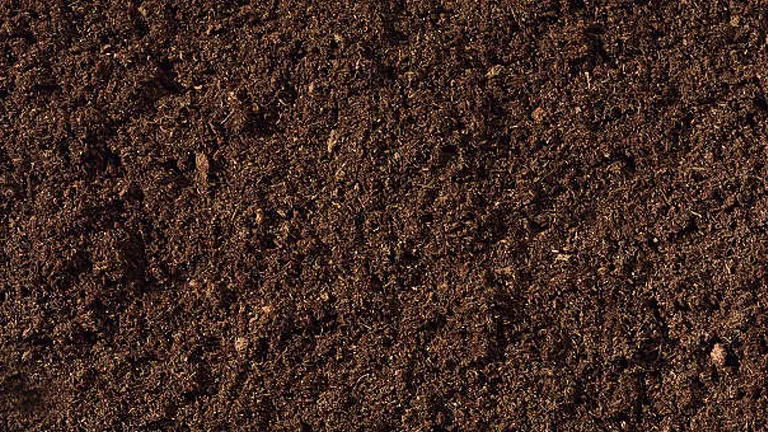
Soil pH is a pivotal factor in determining nutrient solubility and availability in the root zone. Most plants thrive in slightly acidic to neutral pH levels (6.0 to 7.0). At more extreme pH levels, essential nutrients such as phosphorus (P) become less available, and toxic metals like aluminum (Al) can become soluble, potentially harming plant roots. Regular soil testing and pH adjustment using lime (to raise pH) or sulfur (to lower pH) are crucial practices for maintaining optimal soil conditions.
Moisture Levels
Moisture control in the root zone is essential for plant health. Over-watering often results in anaerobic soil conditions, which suffocate plant roots and encourage the proliferation of root-rot fungi. On the other hand, under-watering stresses plants, limits nutrient uptake, and can lead to reduced growth and yield. The optimal moisture level for most plants mimics the natural moisture of a wrung-out sponge, providing enough water for root uptake while allowing adequate oxygen flow.
Temperature
The temperature of the root zone significantly influences root growth and metabolic functions. Ideal soil temperatures for most garden plants range from 65 to 75 degrees Fahrenheit (18 to 24 degrees Celsius). Temperatures outside this range can inhibit root development and function, impacting overall plant health. Strategies like mulching and using ground covers can moderate soil temperature, preventing it from becoming too hot in summer or too cold in winter.
Scientific Analysis of Root Zone Conditions
For a more detailed analysis, the following table presents the impact of varying root zone conditions on plant health, with specific attention to pH, moisture, and temperature:
| Condition | Parameter | Impact on Plant Health | Recommended Management Strategy |
|---|---|---|---|
| Soil pH | Below 5.5 or above 7.5 | Nutrient lock-up or toxicity, poor microbial activity | Adjust pH with lime or sulfur; monitor regularly |
| Moisture Levels | Waterlogged or Dry | Root rot, fungal diseases, or drought stress | Implement proper irrigation practices |
| Temperature | Below 50°F (10°C) or above 86°F (30°C) | Slowed root function, reduced nutrient uptake, or heat stress | Use mulches, consider shaded or insulating materials |
This table illustrates how various conditions within the root zone can affect plant health and provides guidelines for effective management strategies to maintain or restore root zone health.
Common Problems in the Root Zone
Root Rot and Other Diseases

Root rot, a prevalent issue in the root zone, often arises from excessive moisture that displaces oxygen needed by roots. This anoxic condition is ideal for the proliferation of fungal pathogens such as Phytophthora and Fusarium, which cause the roots to become brown and mushy. These pathogens exploit weakened root systems, severely impacting plant health. Improving drainage and regulating watering schedules are critical to managing this problem.
Soil Compaction
Soil compaction is another significant challenge, particularly in urban gardens and areas with heavy foot traffic. Compaction presses soil particles together, reducing porosity and limiting the oxygen available for root and microbial activities. This makes it tough for roots to penetrate the soil, hindering their growth and access to nutrients and water. Aerating the soil periodically and adding organic matter can alleviate compaction.
Salt Accumulation
Excessive use of chemical fertilizers can lead to the buildup of salts in the root zone, which adversely affects plant health by causing osmotic stress. This stress forces plants to expend more energy to absorb water, leading to dehydration and nutrient imbalances. Regular soil testing can help monitor salt levels, and leaching the soil with adequate water can flush out excess salts.
Quantitative Impact of Common Root Zone Issues
To quantify the impact of these common root zone issues, the following table provides specific data on how each condition affects plant health:
| Issue | Scientific Indicator | Impact on Plant Health |
|---|---|---|
| Root Rot | Oxygen Levels < 5% in soil moisture | Leads to root death, decreased nutrient uptake |
| Soil Compaction | Porosity < 15% | Reduces root penetration, limits growth |
| Salt Accumulation | Electrical Conductivity > 4 dS/m | Causes nutrient lockout, impairs water uptake |
Improving and Maintaining a Healthy Root Zone
Proper Watering Techniques

Watering practices are critical for root zone health. The goal is to promote deep root growth which enhances drought resistance and nutrient access. The technique of deep, infrequent watering encourages roots to extend deeper into the soil, making plants more robust and less susceptible to surface dryness. Ideally, watering schedules should be adjusted based on the plant’s lifecycle stage, seasonal climate changes, and current weather conditions. Ensuring the top inch of soil dries out between waterings prevents over-saturation and promotes better root oxygenation.
Soil Amendments
The structure and fertility of the soil in the root zone are fundamental for plant health. Incorporating organic matter such as compost or aged manure significantly improves soil quality. For sandy soils, organic amendments enhance water retention, crucial for maintaining consistent moisture levels. In clay soils, these amendments help break up dense particles, improving drainage and aeration, thus preventing root diseases associated with poor drainage. The right balance of organic matter also fosters a vibrant microbial ecosystem which aids in nutrient cycling.
Regular Soil Testing
Soil testing is an essential tool for optimizing root zone conditions. Regular assessments help track changes in nutrient content, pH levels, and salinity—factors that directly impact plant health. Soil tests allow for targeted interventions, such as adjusting pH to unlock nutrient availability or modifying fertilization strategies to prevent nutrient excess or deficiency.
Optimal Root Zone Management
To provide a clearer understanding of effective root zone management, the following table includes key metrics and their optimal ranges, derived from agricultural research:
| Management Aspect | Optimal Range/Value | Impact on Root Zone Health |
|---|---|---|
| Soil Moisture Content | 20-30% volumetric water content | Ensures adequate hydration without waterlogging |
| Soil Organic Content | 3-6% by weight | Balances water retention and aeration, supports microbial health |
| Soil pH | 6.0-7.0 | Maximizes nutrient availability and uptake |
Advanced Tips for Monitoring and Enhancing the Root Zone
Using Technology to Monitor Moisture and Nutrient Levels
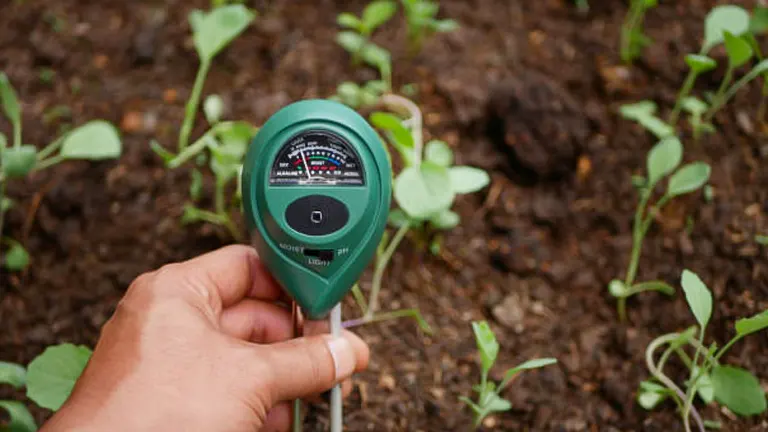
In modern gardening, technology plays a pivotal role in optimizing plant growth. Soil moisture sensors and nutrient meters are critical tools that provide real-time, precise data about the conditions within the root zone. These devices measure variables such as soil moisture levels, pH, and essential nutrient concentrations, enabling gardeners to tailor their watering and fertilization strategies accurately. This targeted approach helps ensure that plants receive exactly what they need for optimal growth, reducing waste and increasing efficiency.
Composting and Beneficial Microbes
Organic methods are essential for sustainable root zone management. Composting transforms kitchen and garden waste into rich organic matter, significantly enhancing soil fertility and structure. This process not only recycles nutrients but also improves soil water retention and aeration. Additionally, introducing beneficial microbes like mycorrhizal fungi and rhizobacteria can revolutionize nutrient uptake. These microbes form symbiotic relationships with plant roots, extending their reach and improving access to water and nutrients, thus enabling more robust plant growth.
Types and Benefits for the Root Zone
Mulching is a highly beneficial organic practice that involves covering the soil surface with materials such as straw, wood chips, or leaves. This technique conserves moisture, moderates soil temperature, and suppresses weed growth, all of which contribute to a healthier root zone. Over time, organic mulches decompose, adding further organic matter to the soil, which enhances microbial activity and nutrient availability.
Enhancing Root Zone Health
The following table provides scientific metrics and their impacts on root zone health, illustrating the benefits of advanced monitoring and enhancement techniques:
| Technique | Parameter Measured | Optimal Range | Impact on Root Zone Health |
|---|---|---|---|
| Soil Moisture Sensors | Volumetric Water Content (%) | 20-30% | Ensures optimal hydration levels for growth |
| Nutrient Meters | NPK Levels (ppm) | Nitrogen: 5-30 ppm, Phosphorus: 3-20 ppm, Potassium: 5-30 ppm | Balances nutrient supply to avoid deficiencies or toxicities |
| Composting | Organic Matter Content (%) | Increase by 3-5% | Boosts nutrient cycling, enhances soil structure |
| Mycorrhizal Inoculation | Mycorrhizal Colonization Rate | 60-80% of roots colonized | Increases nutrient and water absorption efficiency |
Related Post
- How to Build a Barn: A Step-by-Step Guide for Beginners
- How to Build a Sustainable Compost Bin: Easy and Eco-Friendly DIY
- How to Fertilize Bougainvillea: A Complete Guide for Stunning Blooms
- How to Fertilize Apple Trees: Essential Tips for a Bountiful Harvest
- How to Fertilize Lemon Trees: Secrets for Thriving Citrus
- How to Fertilize Avocado Tree: A Step-by-Step Guide for Lush Growth
- 10 Best Bow Saws to Buy in 2024: Top Picks for the Money
- Best Miter Saw For Beginners
- Top 10 Pruning Saws to Buy in 2024: Best for the Money
- 7 Best Pocket Chainsaw
Conclusion
The root zone is crucial for plant health and growth. Understanding and managing it effectively can greatly enhance your plants’ survival and health. Simple steps like using organic methods or advanced technology to care for the root zone can make a big difference in your garden’s success. Taking the time to focus on this essential area is a practical way to ensure healthier plants and a more productive garden.
FAQs
- How does the root zone influence water efficiency in plants?
The root zone’s structure and health directly affect how efficiently a plant uses water. Well-aerated and properly structured soil allows roots to absorb water more effectively, reducing the need for frequent watering and enhancing drought resistance. - Can improving the root zone affect the flavor of my fruits and vegetables?
Yes, a healthy root zone can improve the flavor of fruits and vegetables. Better nutrient uptake from a well-maintained root zone often leads to produce that is richer in sugars, acids, and other flavor compounds. - What is the best way to test the health of my plant’s root zone without damaging the roots?
Use a soil probe or a small trowel to gently remove a sample of soil from around the plant’s roots. This allows you to check for proper moisture levels, signs of pests or diseases, and the overall soil structure without significant disturbance to the roots. - How does the root zone adapt to different climatic conditions?
The root zone adapts through changes in root depth and soil composition. In dry climates, roots may extend deeper to access water, while in colder climates, the root zone might consolidate closer to the surface to benefit from the insulation of snow or mulch. - Can the root zone be too rich in nutrients? What are the signs?
Yes, an overly nutrient-rich root zone can lead to nutrient burn, where high levels of salts from fertilizers harm the plant. Signs include brown or crispy leaf edges, stunted growth, and in severe cases, wilting. - How do cover crops influence the health of the root zone?
Cover crops improve the root zone by adding organic matter, enhancing soil structure, and preventing erosion. Their roots also help break up compacted soil, making it easier for the subsequent crops’ roots to grow. - What innovative technologies are used to monitor the root zone in large-scale agriculture?
Technologies like ground-penetrating radar, moisture sensors, and nutrient meters are increasingly used in precision agriculture to map and monitor root zone characteristics, allowing for tailored irrigation and fertilization practices. - How does urban pollution affect the root zone and what can be done to mitigate these effects?
Urban pollution can lead to contaminated soil and a toxic root zone. To mitigate this, gardeners can use raised beds with clean soil, incorporate activated charcoal into the soil to absorb contaminants, and plant species known for their tolerance to pollution.
Thank you for joining us on this exploration of the root zone. Remember, a little attention to this hidden but vital part of your garden can lead to healthier plants and a more vibrant landscape. Happy gardening!

Emma Hudson
Forestry AuthorEmma's experience in farming shapes her detailed guides on gardening and farming tools, providing practical, actionable advice grounded in real-world experience. Her work targets both newcomers and experienced farmers, aiming to enhance their practices with a mix of traditional wisdom and modern techniques. By making complex agricultural concepts accessible, Emma's guides serve as valuable tools for those navigating the challenges of contemporary farming, offering strategies for sustainable success.













Leave your comment